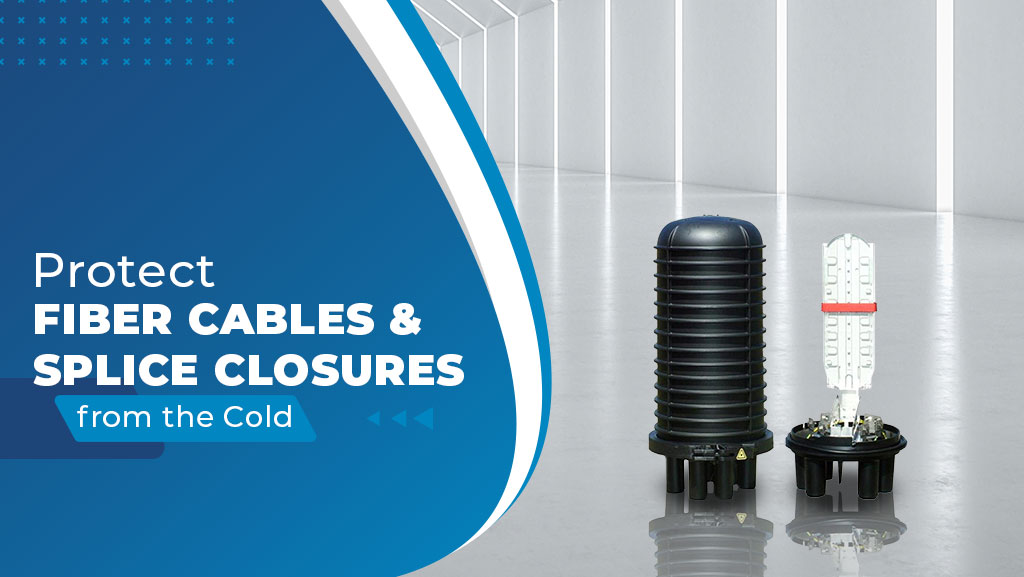
Winter is coming and it’s time for hot chocolates and fluffy sweaters. Have you ever noticed your fiber optic connection getting slow or breaking up in the winter? Is it random or does the weather affect fiber optic cables as well? In this guide, we take a look at the impact of the cold weather on fiber optic cables and give you winter safety tips to keep fiber splice closures in perfect condition.
Fiber optic cables have several benefits over traditional copper cables. They can transmit data over longer distances and are faster than copper cables. With that said, cold weather can impact the performance of your fiber optic networks.
How does cold weather impact fiber optic cables?
The good news is that cold temperatures do not affect the strength of your connection nor does it damage the fiber optic cable directly. However, they can impact the performance of fiber optic accessories like the fiber optic splice closure.
When cold water seeps into the ducts carrying fiber optic cables, they can freeze if temperatures drop near to zero. Frost often causes fiber optic cables to bend, which in turn, causes the transmitted signals to bend, thereby impacting the performance of the network.
Extreme cold weather can lead to frost buildup in the housing thereby causing bending of the cable. Frost and cold can also prevent signals from passing through the cables, impacting the performance of the network. Depending on how much the cable is bent due to frost, the performance of the network is disrupted from minor signal losses to complete outages.
How to protect fiber cables from cold weather?

The easiest way to protect your cables from potential freezing is to install the cables deep underground, below the frost line. This way, the cables are protected from extreme weather and work in all conditions. If you are unable to install cables deep underneath, you can consider using anti-freeze gels that prevent water and frost from entering the splice closures and other open ducts.
Here are some tips to protect your splice closures from extreme cold weather:
- Place the closure in a bucket of warm water. Check if there are any air bubbles escaping out. If yes, then the closure needs to be sealed to prevent frost from seeping in.
- Irrespective of the type of closure, you can use rehabilitation kits to seal the cable entry, thereby keeping frost out.
If you are noticing unforeseen consequences on your fiber optic cable networks due to the cold weather, reach out to Adishwar Tele Networks. We can provide you with the right fiber optic tools and accessories to protect your fiber optic cables during this cold season. Keep your cables protected and enjoy uninterrupted internet connectivity throughout the year.
